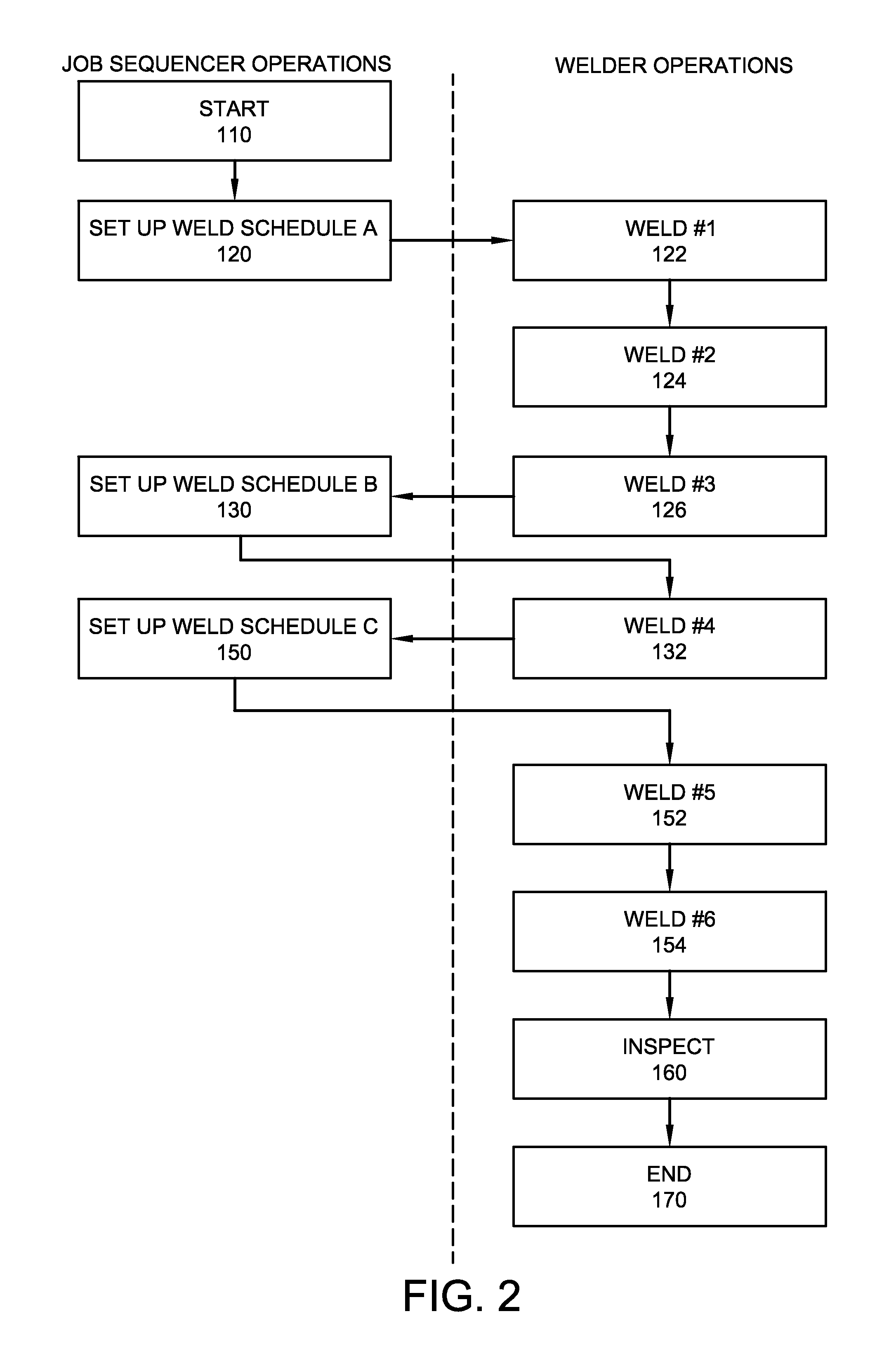System and method of receiving or using data from external sources for a welding sequence
a data source and data technology, applied in the field of welding work cells, can solve the problems of reducing productivity, affecting production efficiency, and affecting production efficiency, and reducing the efficiency of repeating operations
- Summary
- Abstract
- Description
- Claims
- Application Information
AI Technical Summary
Benefits of technology
Problems solved by technology
Method used
Image
Examples
Embodiment Construction
[0029]Embodiments of the invention relate to methods and systems that relate to evaluating one or more conditions or preliminary weld condition (e.g., pre-weld condition) related to a welding system and / or method that utilizes a welding sequence to perform two or more welds with respective welding schedules. In an embodiment, an operator registration is provided that verifies the operator and identifies welding sequences to which the operator is authorized (e.g., trained, experienced, and the like) to perform. In another embodiment, one or more fixture locations are monitored to determine whether a workpiece is accurately configured prior to a welding operation. In still another embodiment, locations on a workpiece can be displayed to assist an operator in performing two or more welds utilizing a welding sequence. Moreover, a wireless system communications a data signal to a welding work cell in which such data is used to identify a welding sequence.
[0030]According to an aspect of t...
PUM
| Property | Measurement | Unit |
|---|---|---|
| frequency | aaaaa | aaaaa |
| frequency | aaaaa | aaaaa |
| frequency | aaaaa | aaaaa |
Abstract
Description
Claims
Application Information
 Login to View More
Login to View More - R&D
- Intellectual Property
- Life Sciences
- Materials
- Tech Scout
- Unparalleled Data Quality
- Higher Quality Content
- 60% Fewer Hallucinations
Browse by: Latest US Patents, China's latest patents, Technical Efficacy Thesaurus, Application Domain, Technology Topic, Popular Technical Reports.
© 2025 PatSnap. All rights reserved.Legal|Privacy policy|Modern Slavery Act Transparency Statement|Sitemap|About US| Contact US: help@patsnap.com



